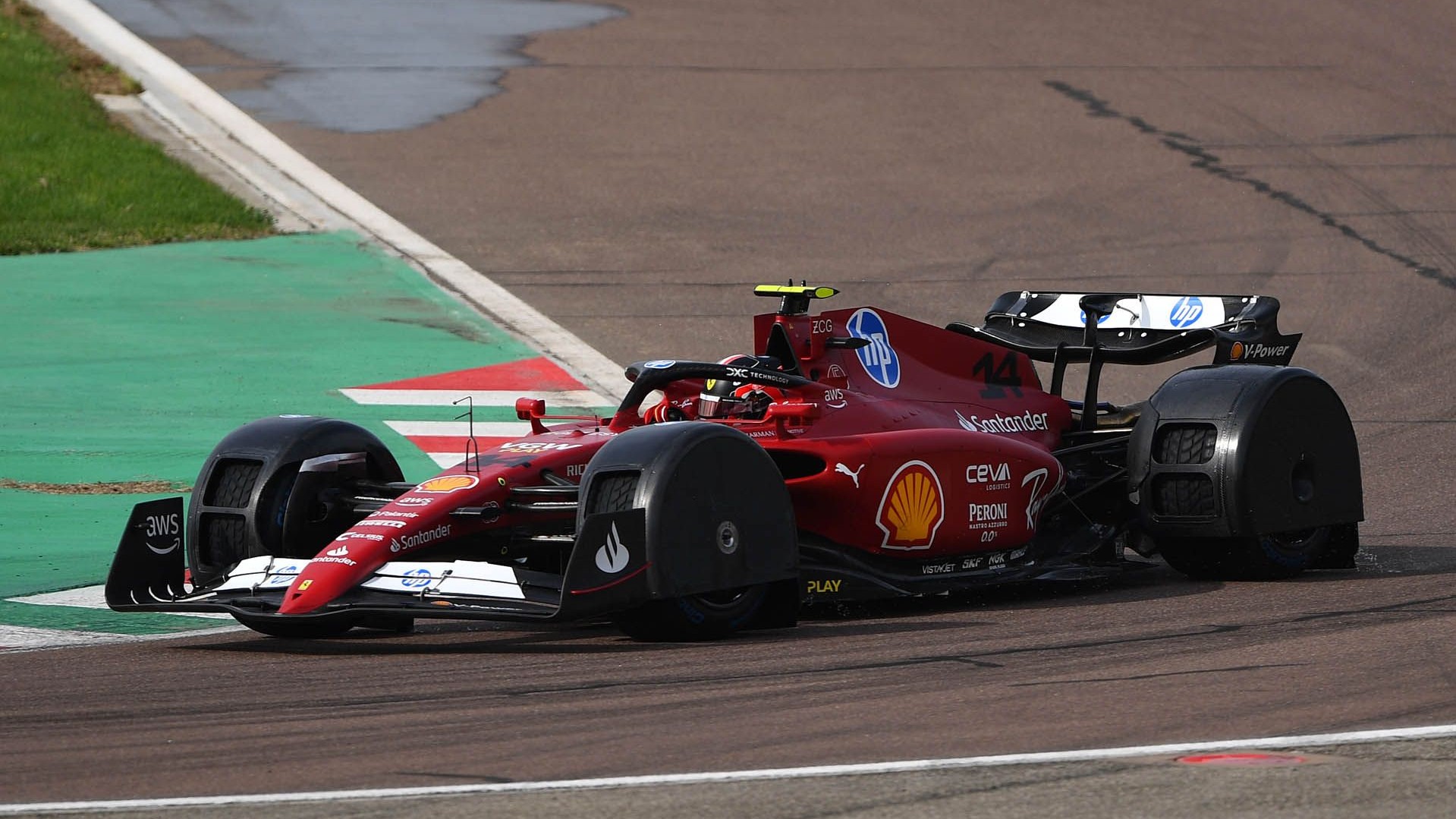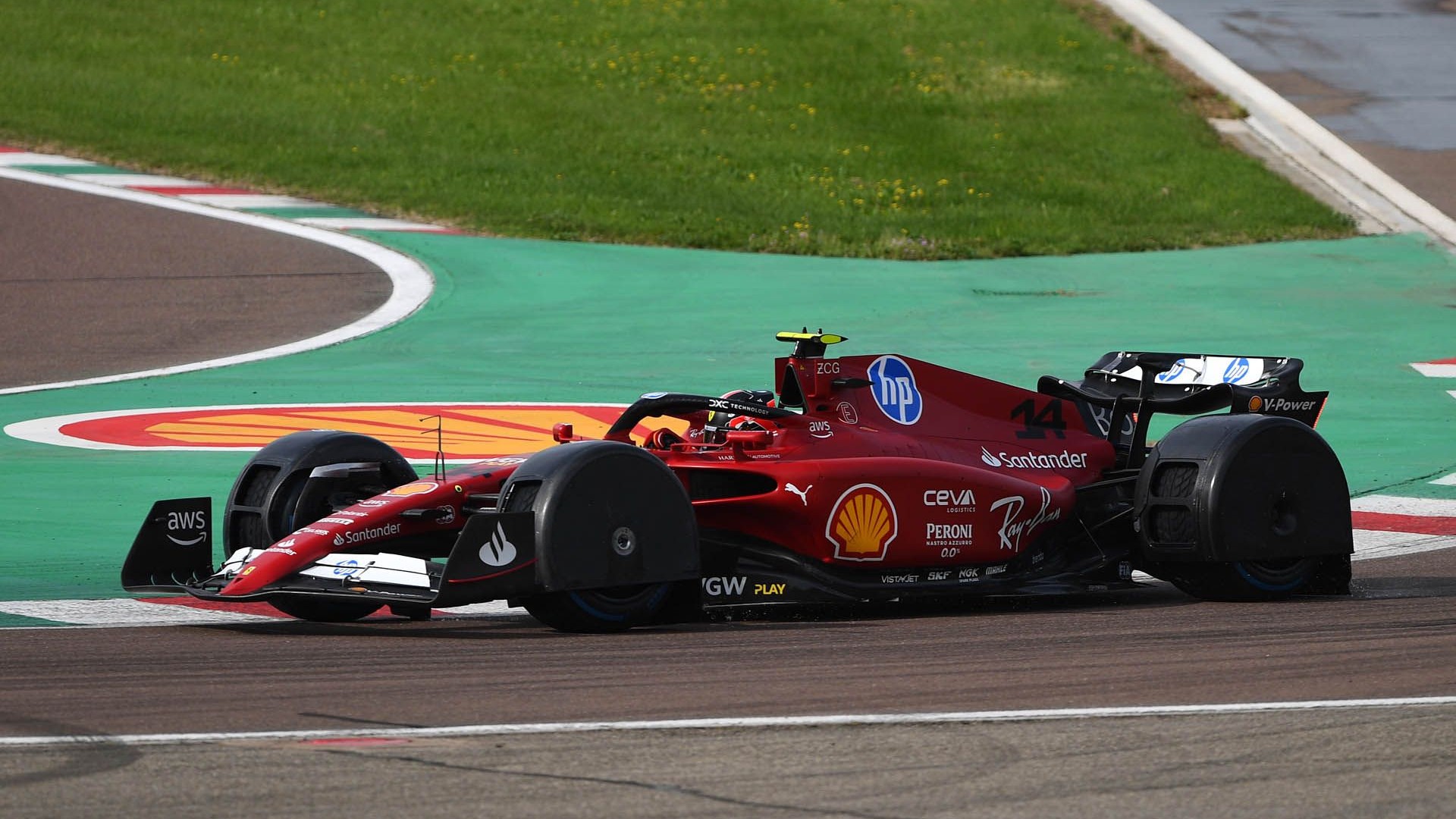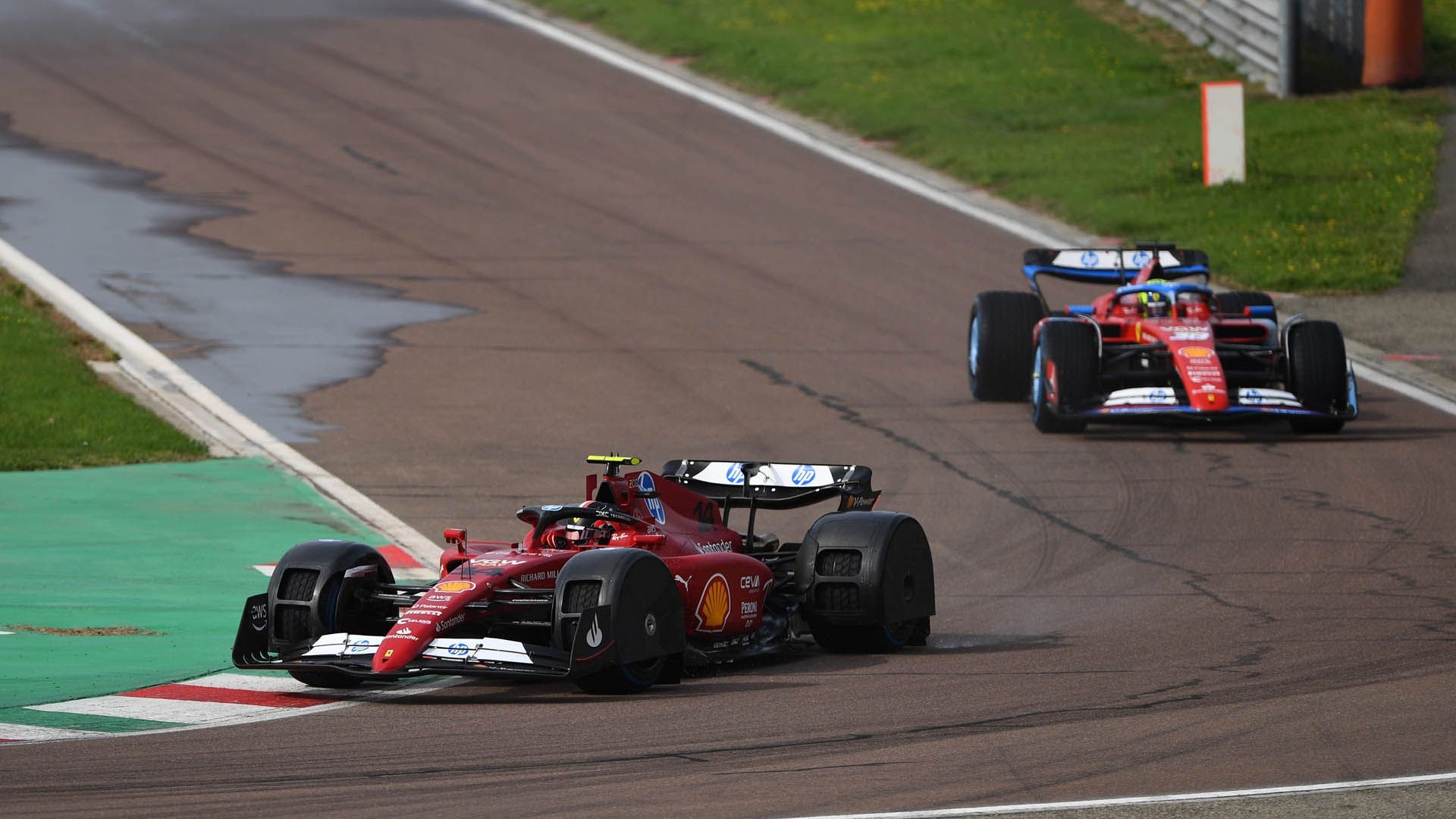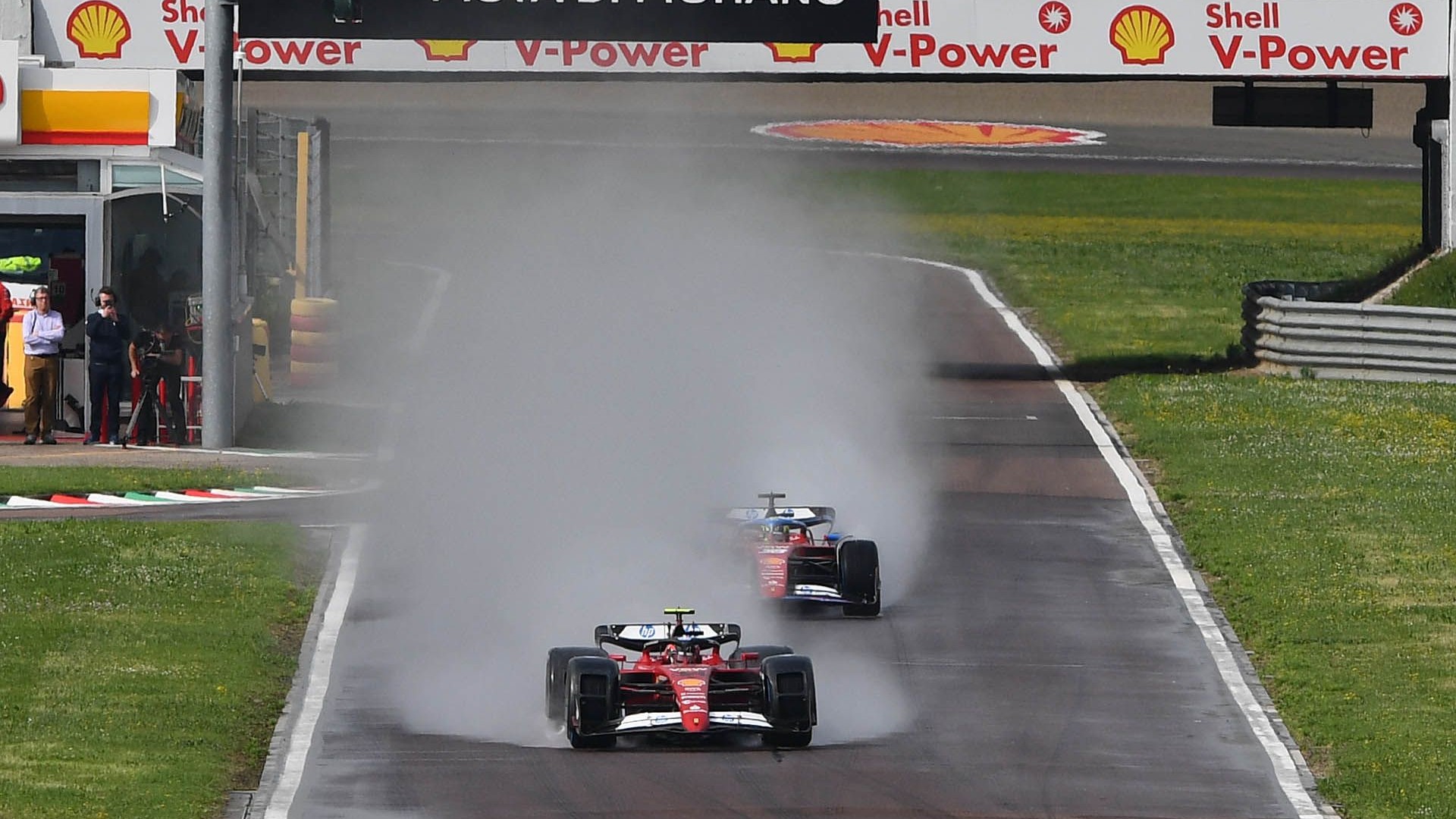Ferrari this week tested new spray guards for its Formula 1 cars as the FIA looks to tackle the problem of visibility on wet tracks.
The test, which took place at Ferrari's own Fiorano circuit, saw Arthur Leclerc (brother of current Ferrari F1 driver Charles) driving last year's race car with the experimental spray guards while Ferrari F1 reserve driver Oliver Bearman followed in the team's 2024 F1 car.
The spray guards essentially add fenders to the open-wheel F1 cars. They have two holes at the front but are fully open at the back. Photos show that two versions were tested: one with solid sides, and one with spoke-like sides. Even with the spray guards fitted, the photos also show the lead car throwing up a significant amount of spray.
As noted by Motorsport.com, the test was organized by the FIA, which is looking at spray guards as a solution for improving visibility of following cars during rainy on-track sessions. Even when there isn't enough standing water on the track to cause concerns about hydroplaning, spray can limit drivers' visibility, causing sessions to be cancelled or leading to crashes.
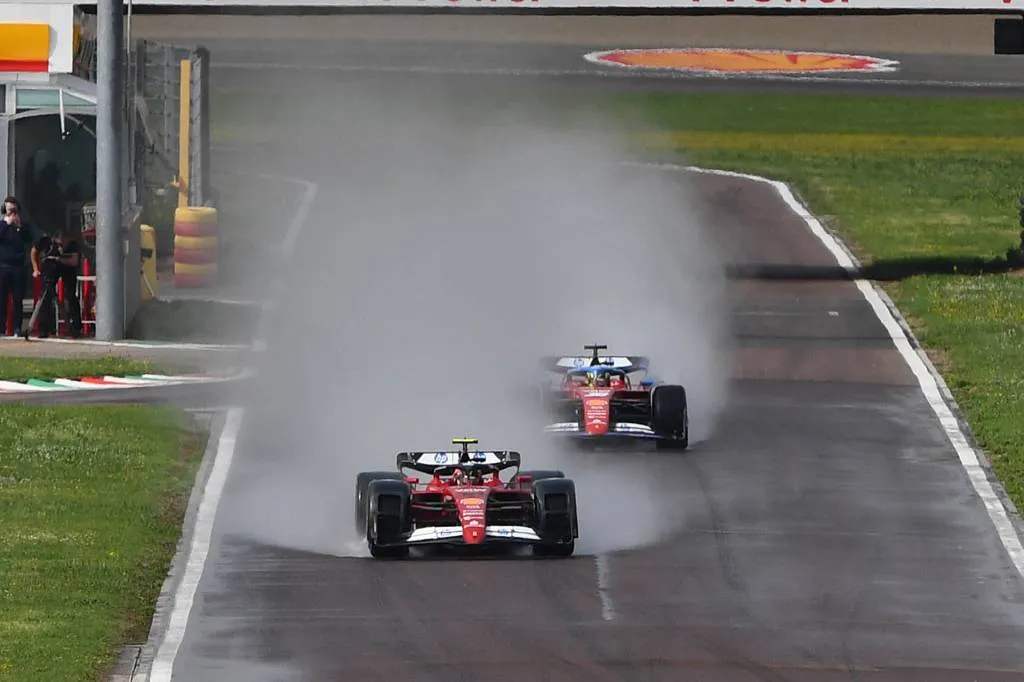
Formula 1 spray guard testing – Photo by Rudy Carezzevoli/Getty Images
An earlier version of the spray guards were tested at a wet Silverstone Circuit last year with Mercedes-Benz AMG reserve driver Mick Schumacher. McLaren driver Oscar Piastri drove behind Schumacher to test visibility. While no photos of that test were released, 3D images released by the FIA showed a design that covered less of the wheel than the spray guards tested at Fiorano, according to Motorsport.com.
F1 cars already got a radical visual overhaul for 2022, but the adoption of these spray guards could change their appearance even further—on rainy days, at least.
Similarly, F1 also adopted the Halo cockpit protection system a few years back to improve crash safety.
